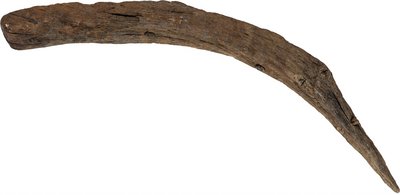Ship finds in water and in graves
There have been a relatively large number of archaeological finds of ships and boats in Scandinavia. Some were found in burial mounds on land, others under water. The ships found under water were deliberately sunk in order to function as barriers or as filling in the harbour.
A number of wrecks have been found in Roskilde Fjord in Denmark. One of these is a longship made in Dublin, Ireland during the 9th century. With a reconstruction of the longship, named Sea Stallion, an arduous trip was undertaken, sailing from Roskilde to Dublin.
With the excavation of the Viking town of Hedeby, in modern day northern Germany, a fire-damaged longship, 31 metres long with 30 pairs of oars was found. It is slender, with a shallow draft and a low freeboard. Analyses of the wood in the ship revealed that it was built in the year 985.
In Sweden finds of ships without fire-damage are rare. Only one has been found, the Äskekärr ship. It is a knarr, but unfortunately it is very fragmented.
More boats of smaller size, around 8–12 metres long, have been found in graves. Often, they are almost completely decomposed, but their form is made visible in the excavated grave by their iron rivets. It is these rivets that were used to join together the strake planks of the boats or ships.
